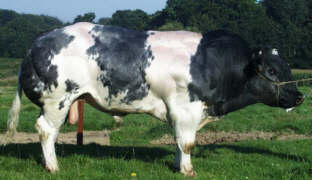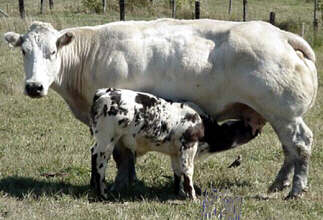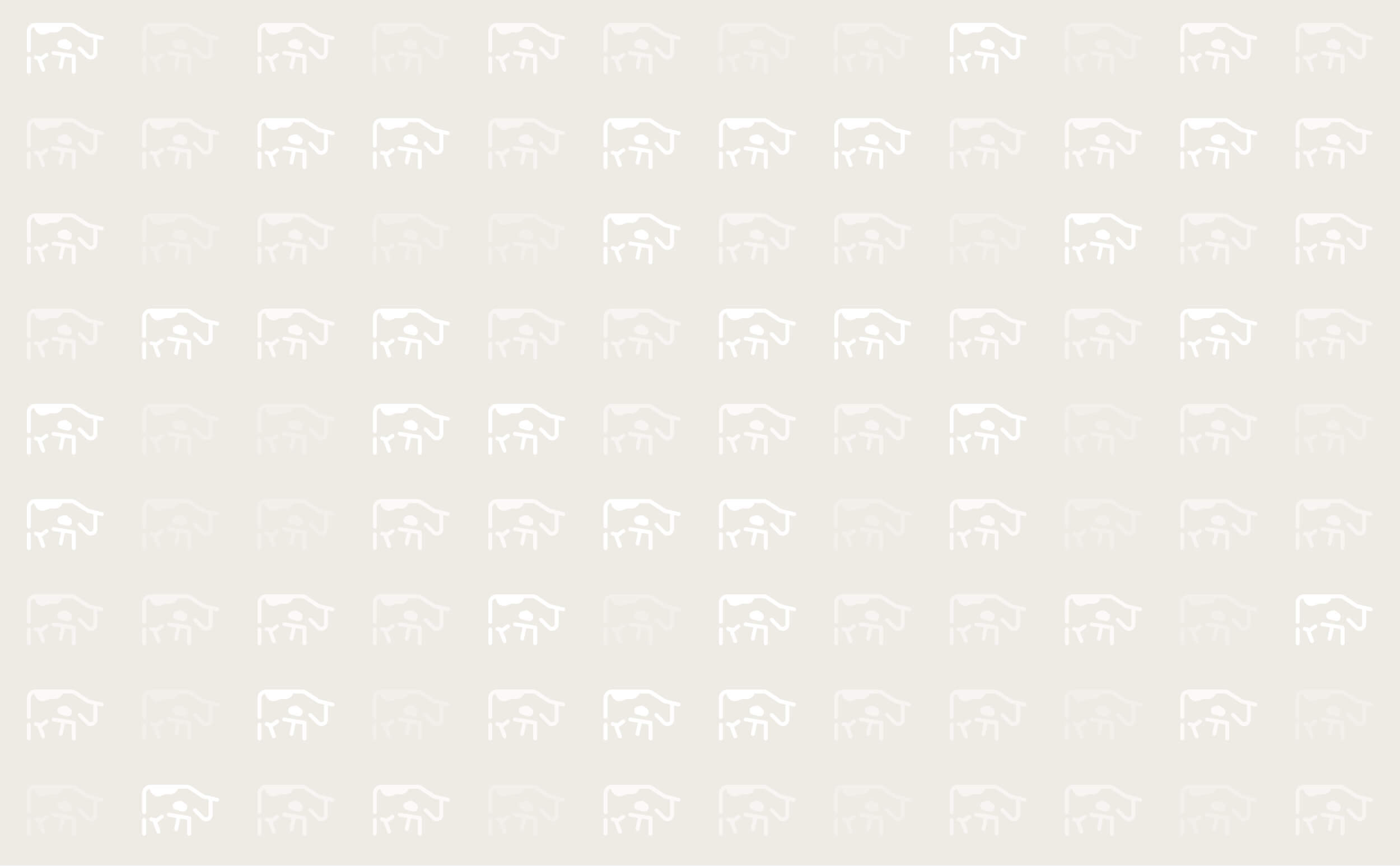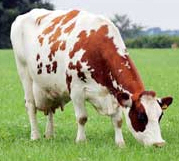



Belgian Blue
History
As the name implies, Belgian Blue cattle originated in central and upper Belgium. During the second half of the 19th Century Shorthorn bulls were exported from the UK to Belgium to improve the native population which was primarily of the dairy type (red-pied and black-pied cattle). Some sources also cite the introduction of Charolais breeding throughout the 19th Century.
Between 1920 and 1950 there was active selection for this dual purpose type of animal. 1950 to 1960 saw a move to favour animals with heavier muscling. The real break through came in the 1960's with the development of the extreme double muscling characteristics. As a result of skilful selection, the 'Blue' as we know it today was born.
The Belgian Blue cattle are also known as Race de la Moyenne et Haute Belgique, Belgian Blue-White, Belgian White and Blue Pied, Belgian White Blue, Blue, Blue Belgian.
Characteristics

The Belgian Blue is a large sized animal with rounded outline and prominent muscles. The shoulder, back, loin and rump are heavily muscled. The back is straight, rump is sloping, tail set is prominent and skin is fine. It has fine but strong legs and walks easily.
Their colour can range from white, blue roan, black or a combination of them, the colour red is present in some genotypes.
The breed is known for its quiet temperament.
The weight of an adult bull ranges from 1100 and 1250kg for a height at the withers of 1.45m to 1.50m. It is by no means rare to see animals of more than 1300kg. Cows can reach a weight of 850 to 900kg and can exceed 1.40m.
The muscle is a natural development for the breed. They are not born with that extreme muscle, but start developing that muscle at 4 to 6 weeks old.
Belgian Blue Beef is famous for its impressive muscling which is commonly referred to as "double muscling". Belgian Blue Beef outclasses all other beef breed in carcass yield (up to 80%). When used in crossbreeding programs of other dairy or beef breeds, it increases carcass yield from 5 to 7 % compared to the maternal line.
Extensive research has shown that Belgian Blues possess a gene which suppresses the production of myostatin, a protein that normally inhibits muscle growth after a certain point. Pure Belgian Blues carry two copies of this gene; in crossbreeding, one copy is usually transmitted and serves to increase carcass weight in the offspring of a cross-breeding program.
As a result the Belgian Blue carcase produces a high yield of saleable meat with a boning out % in excess of 85%.
Statistics

Photo courtesy of Belgian Blue Sires, www.belgianbluesires.com |
As a modern beef breed, the Belgian Blue is outstanding for its:
- Ease of Calving
- Short gestation period
- Good mobility and structure
- Excellent temperament
- Hyper-developed muscling
- High degree of conformity
- Precocity, good size
- Capacity for young meat development
- High food efficiency for fattening
- Facility for cross-breed calving
The average age at first calving is 32 months, 75% of cows calving for the first time between 28 and 35 months. Two year old calving has also been successful. The average is 23 months, 75% falling between 22 and 24 months.
Comparative
European comparisons between the Belgian Blue and Charolais found the Belgian Blue to have a higher muscularity, milk yield and daily gain. The Belgian Blue animals were also older at sexual maturity.
There is a common misconception in the cattle breeding industry that the Belgium Blue has a poor calving record and that many are calved via caesarean. This only occurs in pedigree breeding on stud farms when purebreds are calved to purebreds which is mainly done in Belgium.
Internationally the Belgium Blue is used as a terminal sire for meat production. When used as a terminal sire the results show that this breed is easier calving when compared to breeds such as Simmental, Charolais and even Friesian calves born to Friesian cows mated to Friesian bulls.
Results of studies conducted in Belgium show that the carcass characteristics of the Belgian Blue were expressed in the crossbreds whose commercial value was then substantially increased. The observation explains the growing interest for the Belgian Blue breed as a terminal sire, its carcass composition and it's growth potential.
Meat
In an extensive 3 year test, done by the USDA at the Meat Animal Research Center, Clay Center, Nebraska, the Belgian Blue crossbred cattle were tested with the industry standard Warner-Brazner shear test for tenderness. The Belgian Blue cattle had a lower shear value than the Hereford-Angus contemporary average, 12.8 versus 12.9, with comparable tenderness and flavor on the sensory panel. Belgian Blue cattle also exhibited less than half the fat cover, .21 inch cover versus .45 inch cover, a 53% reduction. Belgian Blue is on line for the new standards. The Belgian Blue also showed 16% less marbling and 14.2 more ribeye area than the average carcass.
Distribution
The Belgian Blue is gaining popularity as a beef breed around the world and can now be found in Europe, Brazil, America, Canada and New Zealand.
References (the above information was cited from the following sites)
(Headline photo courtesy of Belgian Blue Sires, www.belgianbluesires.com)


